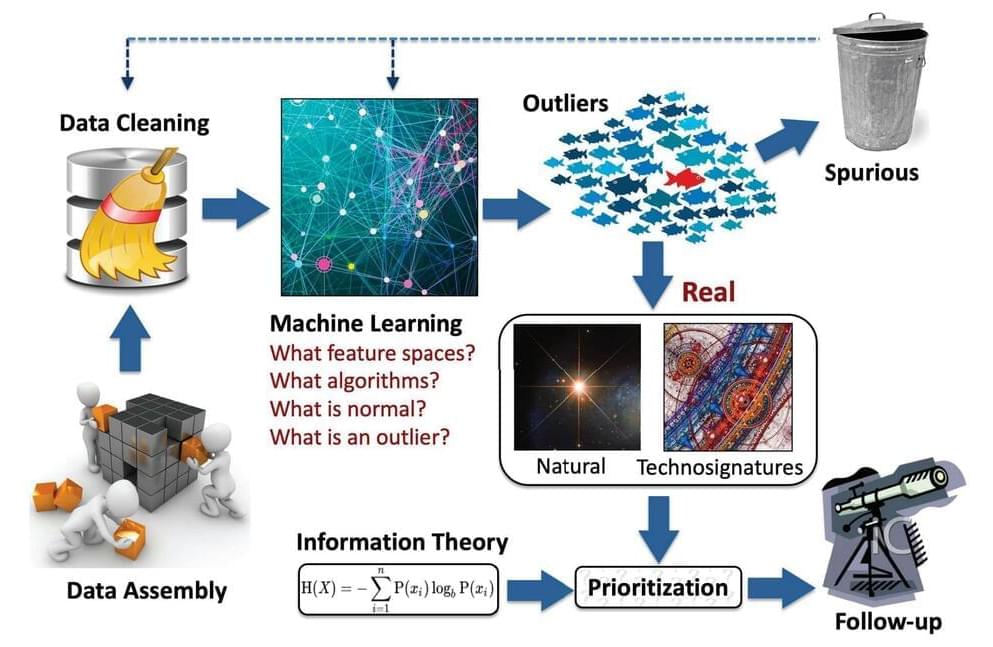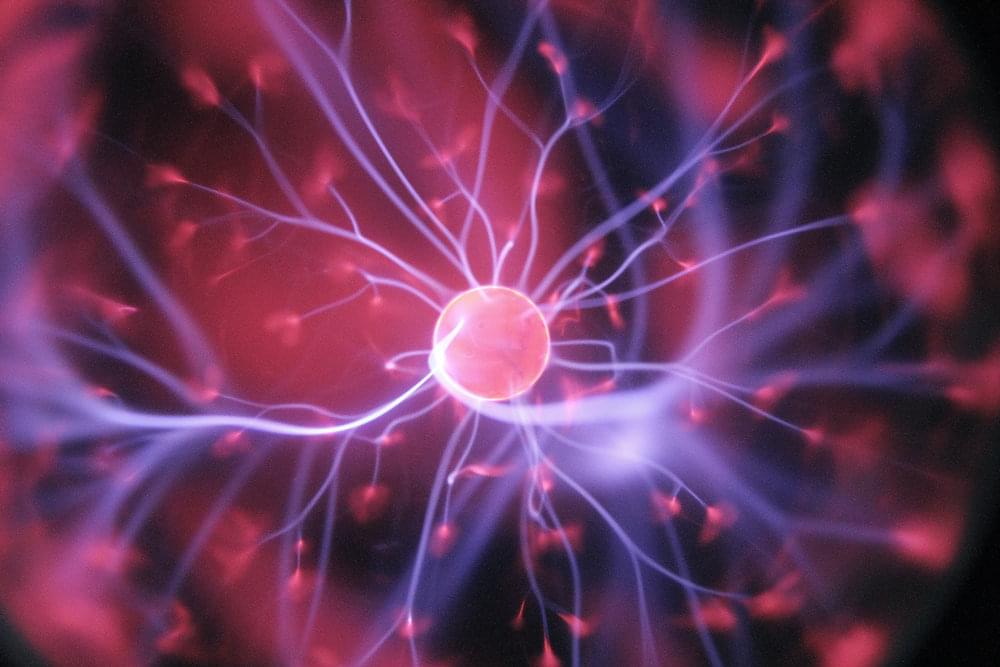A book-length thought experiment uses math to investigate some of life’s big questions.



The universe is bigger than you think.
This means any deep-space future awaiting humanity outside our solar system will remain beyond the span of a single life until we develop a means of propulsion that outclasses conventional rockets. And, when three studies rocked the world earlier this year, it felt like a dream come true: Warp drive was no longer science fiction, potentially unlocking a theoretical basis to build faster-than-light warp drive engines that could cut a trip to Mars down to minutes.
However, a recent study shared in a preprint journal cast doubt on the theory, pointing to a gap in the math that could put the viability of a physical warp drive back into the realm of speculation.

A large team of scientists with a wide variety of backgrounds has joined together to suggest that a data-driven approach to search for life elsewhere in the universe should replace methods now in use. In their paper posted on the arXiv preprint server, the group explains how a data-driven approach could help prevent human-centered biases from overlooking potential signs of life.
Over the past few decades, scientists have become much more open to the possibility of discovering life in places other than on Earth. And because of that, more work has been done to find life—or at least signs of it. But, as the group on this new effort points out, most such approaches tend to expect that other forms of life will resemble those found on Earth. And that could be blinding scientists to signs of life that might be there but are being missed.
To overcome such a problem, the researchers suggest a more data-driven approach be used. They note that a lot of data have been obtained regarding various parts of the night sky. They also note that the data are in different formats. Some are radio wave graphs, while others describe the attributes of light emitted by a section of the sky, or even a given planet.
Look, we write rather a lot about the Fermi Paradox, so trust us when we say that the Berserker Hypothesis may be the darkest explanation out there. Not only would it mean that the universe is a dead, lifeless husk, but it would also imply that our own destruction is imminent.
The Fermi Paradox at its most basic is, given the high probability that alien life exists out there (bearing in mind the vastness of space and that we keep finding planets within habitable zones), why has nobody got in touch yet?

The existence of an oxygen bottleneck has significant implications for future searches of technological activities on exoplanets.
Astrobiologists theorise that low-oxygen planets would be unlikely to produce advanced civilisations, as the discovery of fire requires easy access to open air combustion, which is only possible when oxygen partial pressure is above 18%.
When the Earth formed around 4.6 billion years ago, its atmosphere consisted mostly of carbon dioxide, methane, ammonia, and water vapour – with a lack of free oxygen making it totally inhospitable for aerobic life.
We are about to leap into the age of quantum computing and possibly our technological capabilities will evolve rapidly as a result.
Does this mean we are on the threshold of developing a Type 2 civilization?
If so, we should soon be able to make first contact with other intelligent life forms and slowly conquer space.
Despite this leap, however, we would never manage to make contact with a Type 7 civilization. Why this is so and what this Type-7 civilization is all about, you will now find out.

Bacteria that can align themselves with the Earth’s magnetic field have been found in a new habitat. Previously spotted on land and in shallow waters, these magnetotactic bacteria have now been confirmed to thrive in the depths of a hydrothermal vent. Despite the challenging conditions, the bacteria were able to adapt and survive in an environment that was not ideal for their typical needs.
Magnetotactic bacteria are of interest not only for the role they play in Earth’s ecosystem but also in the search for extraterrestrial life. Evidence of their existence can remain in rocks for billions of years. Their magnetic inclinations can also provide a record of how magnetic poles have shifted over time. This new discovery brings hope to researchers that the magnetic bacteria might be found in yet more unexpected locations, on Earth and perhaps even on Mars.
Mars is the second smallest planet in our solar system and the fourth planet from the sun. It is a dusty, cold, desert world with a very thin atmosphere. Iron oxide is prevalent in Mars’ surface resulting in its reddish color and its nickname “The Red Planet.” Mars’ name comes from the Roman god of war.
Michael Levin discusses his 2022 paper “Technological Approach to Mind Everywhere: An Experimentally-Grounded Framework for Understanding Diverse Bodies and Minds” and his 2023 paper with Joshua Bongard, “There’s Plenty of Room Right Here: Biological Systems as Evolved, Overloaded, Multi-scale Machines.” Links to papers flagged 🚩below.
Michael Levin is a scientist at Tufts University; his lab studies anatomical and behavioral decision-making at multiple scales of biological, artificial, and hybrid systems. He works at the intersection of developmental biology, artificial life, bioengineering, synthetic morphology, and cognitive science.
❶ Polycomputing (observer-dependent)
1:59 Outlining the discussion.
3:50 My favorite comment from round 1 interview.
5:00 What is polycomputing?
8:50 An ode to Richard Feynman’s “There’s plenty of room at the bottom“
11:10 How/when was this discovered? Reductionism, causal power…
14:40 “It’s a view that steps away from prediction.“
16:20 From abstract: Polycomputing is the ability of the same substrate to simultaneously compute different things *but emphasis on the observer(s)*
17:05 What’s an example of polycomputing?
19:40 They took a different approach and actually did experiments with gene regulatory networks (GRNs)
23:18 Different observers extract different utility from the exact same system.
26:35 Spatial causal emergence graphs (determinism, degeneracy) | Erik Hoel’s micro/macro & effective information.
29:25 Inventiveness of John Conway’s Game of Life.
❷ Technological Approach to Mind Everywhere.
34:20 Tell me 3 things to determine intelligence (ball vs mouse on a hill)
39:50 Jeff Hawkins’ Thousand Brains Theory.
41:05 Agency is not binary, continuum of persuadability.
44:50 Where’s the bottom of agency? Plants & insects far off from 0
46:55 What is the absolute minimum amount of agency? Some degree of goal directed behavior & indeterminacy…
51:05 Life is a system good at scaling.
51:41 “To me, our world doesn’t have 0 agency anywhere.“
53:50 As an engineer, what can I take advantage of?
55:00 Surely you don’t think the weather has any intelligence to it…
❸ Attractor Landscapes.
58:35 Homeostatic loops, morphological spaces, attractor landscapes.
1:00:35 “Of course we’re living in a simulation!“
1:06:45 Attractor landscapes, topography, anatomical morphous space (D’Arcy Thompson)
1:12:28 Planaria stochastic, probability of head shape proportional to evolutionary distance between species.
1:15:15 What is the secret of the universe? Attractor landscapes, quantum fields, black holes.
1:19:05 We need a new system of ethics for unconventional minds.
🚾 Works Cited.

Animals have a living pulse. Do microbes have something like that as well? If so, it could be a universal biosignature for detecting extraterrestrial life and be useful for many other applications. For more see:
When can we call something alive? This question is more difficult than you may think and has far-reaching practical implications.
An exploration of how old the first alien civilizations could be, or how early in the history of the universe were planets possible.
My Patreon Page:
https://www.patreon.com/johnmichaelgodier.
My Event Horizon Channel:
https://www.youtube.com/eventhorizonshow.
Music: